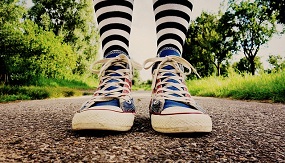
© Pixabay
In 2017, the Finnish Environment Institute (SYKE) selected ten pioneering municipalities in circular economy: Ii, Jyväskylä, Kuopio, Lahti, Lappeenranta, Porvoo, Riihimäki, Rovaniemi, Turku and Vantaa. The aim has been to promote material-efficiency and recycling in the municipalities in a tangible and ambitious manner. The municipalities were selected among some 20 applicants using precise criteria.
In October, they gathered in Viikki, Helsinki, to share their experiences and talk about topical issues. Examples of the tangible actions the municipalities had taken to promote circular economy were all extremely interesting.
Reusable buildings and material footprints
The City of Vantaa participates in the recently launched international CIRCUIT project funded by the EU Horizon programme, seeking ways to use circular economy construction solutions in urban planning.
“The project will include three instalments: urban mining activities, extending the life span of buildings, and designing new buildings to allow dismantling and reuse”, says Project Coordinator Kimmo Nekkula from Vantaa.
An experiment called “Viksu kuopiolainen” has been launched in Kuopio, in which 31 participating households try out environmentally friendly everyday life for one month. The material and carbon footprint of the households is calculated. The experiment is part of the international Sustainable Lifestyles Accelerator – Catalyzing Change (ACCELERATOR), to which eight Finnish cities are participating.
The City of Riihimäki has, for example, introduced circular economy as part of teaching from early childhood education all the way to secondary education. Teachers have been appointed for every school responsible for seeking topics related to circular economy.
The construction of the Kulloo business area will begin in Porvoo in 2020. In the construction of the area, 60% of the soil can be recycled. Rock material, for example, will be crushed and used for the structures of the street areas. Cooperation is also being carried out with the companies in the area for the utilisation of the soil.
Lappeenranta is increasing the separate collection of plastic packaging. By the end of 2019, collection points will be made available in all residential buildings with over 30 apartments, and by the end of 2021, in all residential buildings with over 20 apartments. In addition, there are approximately 20 extra collection points in South Karelia to support the Rinki collection operations.
Visibility, awards, and internationalisation
Representatives of municipalities said that being a pioneer attracts attention and awards. In September, Jyväskylä was chosen as the circular economy municipality of the year. Lahti has been chosen as the European Green Capital 2021. The themes of the year will include a carbon-neutral life, participation, circular economy, nature, and water.
“We are about to launch a foundation to manage the activities, events, and publicity of this significant year. This is a chance for all of Finland to export its environmental competence”, says Environmental Guidance Manager Päivi Sieppi from Lahti.
Energy expert Kari Manninen from Ii said that a BBC working group will come to Ii for a week to film a documentary. This is not the first time that Ii has attracted international attention with its climate work.
The Arctic Design Week will be organised in March in Rovaniemi, and the city will participate in the event with themes related to circular economy. The main theme of the entire event is “recreate”. The event will present sustainable and responsible design.
The City of Turku has been part of ICLEI for a long time and has now also joined the Green Circular Cities Coalition (GCCC). In November, a group from Japan is coming to Turku to familiarise themselves with the circular economy sites and the City’s environmental work, and a group from Turku will later go to Japan.